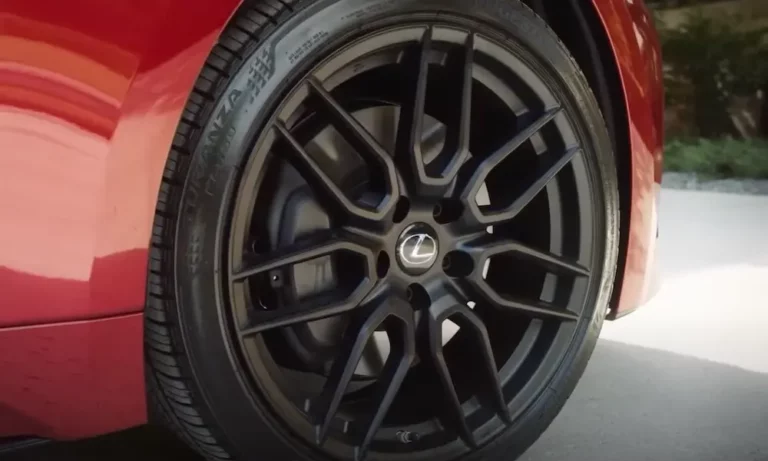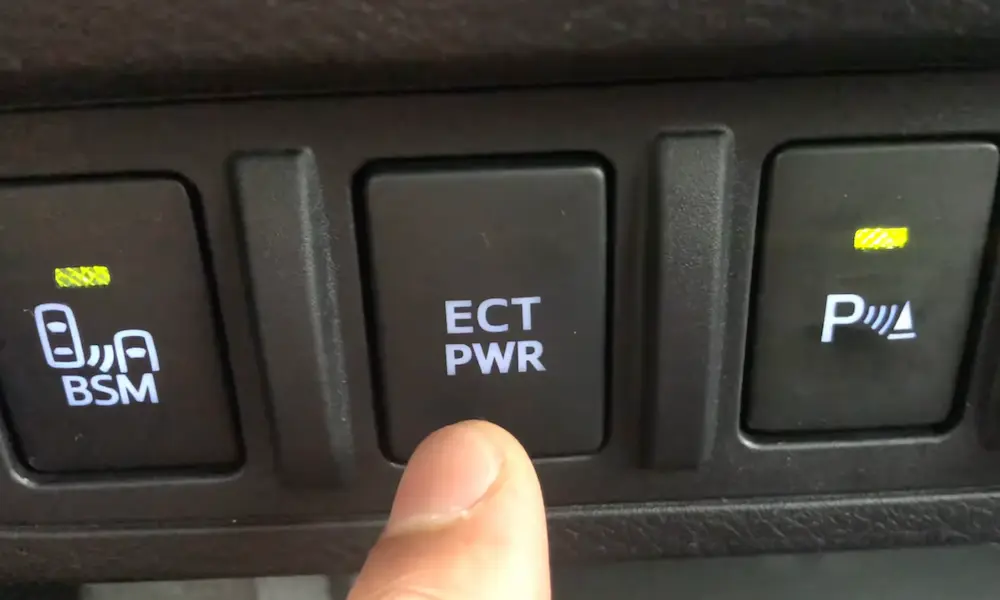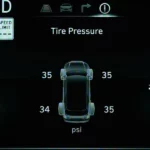Have you ever noticed that annoying tire pressure warning light on your Lexus dashboard? It’s like your car’s way of saying, “Hey, something’s not right with my tires!” The good news? Resetting your Lexus tire pressure reset system is something you can handle yourself in most cases.
What Is the Tire Pressure Monitoring System (TPMS)?
Your Lexus TPMS isn’t just another fancy car feature—it’s a critical safety system that constantly watches your tire pressure. Unlike older cars where you’d have to manually check tire pressure, Lexus vehicles use direct TPMS technology with sensors inside each tire that measure air pressure in real-time.
Why is proper tire pressure so important? It:
- Prevents dangerous blowouts on highways
- Helps your car grip the road better
- Saves you money on gas (up to 3% better fuel economy)
- Extends the life of your tires
- Keeps you safer on the road
When You Need to Reset Your Lexus TPMS
The tire pressure warning light isn’t there to frustrate you—it’s trying to tell you something important. Here’s when you should perform a Lexus tire pressure reset:
- After adding air to your tires
- Following routine tire rotation
- When you’ve replaced one or more tires
- After installing new TPMS sensors
- When the warning light stays on despite properly inflated tires
Two Main Methods for Resetting Lexus TPMS
Lexus has evolved their TPMS reset procedures over the years. Your specific method depends on your vehicle’s age and model. Here are the two primary approaches:
Method 1: Using the TPMS Reset Button (Pre-2016 Models)
For older Lexus vehicles manufactured before 2016, you’ll typically use a dedicated reset button:
- First, make sure all your tires are inflated to the recommended pressure (find this on the driver’s door jamb sticker)
- Turn your ignition to “ON” position without starting the engine
- Find the TPMS reset button—usually located under the steering wheel, near your knees, or inside the glove compartment
- Press and hold this button until the tire pressure light blinks three times
- Release the button and wait for the system to calibrate
- For some models, you’ll need to drive about 20 minutes at speeds over 25 mph to complete the initialization
Method 2: Using Multi-Information Display (2016 and Newer Models)
Newer Lexus models (2016 and beyond) typically use the dashboard information display:
- Ensure all tires are properly inflated
- Turn on your vehicle or switch to “ON” position
- Navigate to the settings menu using your steering wheel controls
- Select “Vehicle Settings”
- Find and select the “TPMS” option
- Press and hold the center button or “OK” until confirmation appears
- The tire pressure warning light should flash three times when successful
Model-Specific TPMS Reset Instructions
Lexus RX Series Reset Procedures
2008-2015 Lexus RX Models:
- Inflate all tires to the recommended pressure
- Turn ignition to “ON” without starting the engine
- Locate the TPMS reset button above the accelerator pedal
- Press and hold until the tire pressure indicator blinks three times slowly
- The system will now record each tire’s new pressure
2016-2022 Lexus RX Models:
- Set all tires to proper pressure
- Turn on your vehicle
- Use steering wheel buttons to access the Gear tab menu
- Navigate to “Vehicle Settings” and press OK
- Scroll down to “TPMS”
- Hold the OK button until reset confirmation appears
2023-2025 Lexus RX Models:
- Inflate all tires correctly
- Start your vehicle
- Tap the gear icon on the touchscreen
- Select “Vehicle Customize”
- Navigate to the tire pressure menu
- Tap “Set current air pressure”
- Confirm by selecting “Continue” when prompted
Lexus NX Series Reset Process
The Lexus NX TPMS reset procedure is straightforward:
- Turn on your NX
- Press the “Home” button on your steering wheel
- Navigate to the settings icon using arrow buttons
- Scroll to “TPMS” using up/down arrows
- Press and hold the center button until the system recalibrates
Lexus IS and CT200h Series (2011-2021)
For the sporty IS lineup and hybrid CT200h:
- Check that all tires have proper pressure
- Turn the ignition to “ON”
- Find the reset button under the steering column
- Press and hold until the TPMS light blinks three times
- Allow the system to calibrate
Troubleshooting When TPMS Reset Doesn’t Work
Sometimes the tire pressure light stubbornly stays on even after you’ve reset the system. Before heading to the dealership, try these fixes:
- Double-Check Your Tire Pressure: Use a quality gauge to verify all tires (including the spare if your model monitors it) are at the exact recommended pressure when cold. The proper inflation levels for your specific model can be found on the driver’s door jamb sticker.
- Complete the Drive Cycle: Many Lexus models need you to drive for about 20 minutes at speeds over 25 mph to fully initialize the system after a reset. Try taking a highway drive to give the system time to calibrate.
- Check for Sensor Issues: If the light continues to flash or comes on quickly after reset, you might have a failing sensor battery or damaged sensor. TPMS sensor batteries typically last 5-10 years before needing replacement.
- Look for ECU Lock Issues: If you previously used the “SET” button when replacing TPMS sensors, your vehicle’s computer might need to be unlocked using a specialized TPMS tool before the reset procedure will work properly.
- Inspect for Temperature Effects: Significant temperature drops (like overnight in winter) can temporarily lower tire pressure and trigger the warning. Check pressure again when tires are cold.
Understanding Your TPMS Warning Lights
Lexus uses different warning patterns to communicate specific issues:
- Solid Light: Indicates one or more tires are below recommended pressure
- Flashing Light (1 minute then solid): Usually indicates a system malfunction
- Flashing Light (continuously): Often signals a bad sensor battery or damaged sensor
Each light pattern tells you something different about what’s happening with your tire pressure monitoring system.
Benefits of Properly Functioning TPMS
Keeping your Lexus TPMS working correctly does more than just turn off an annoying light:
- Safety Improvement: NHTSA studies show properly inflated tires significantly reduce accident risk
- Extended Tire Life: Proper inflation can extend tire life by 4,700 miles on average
- Better Fuel Economy: Save up to 3% on fuel costs with properly inflated tires
- Enhanced Handling: Your Lexus will handle and brake as designed
- Environmental Impact: Reduced rolling resistance means lower emissions
DIY vs. Professional TPMS Service
While resetting your TPMS is usually a DIY job, there are times when professional help makes sense:
When to DIY:
- Simple pressure adjustments and resets
- After routine tire rotation
- When the light comes on after temperature changes
When to Call a Dealer or Tire Shop:
- If reset procedures don’t work after multiple attempts
- When replacing TPMS sensors (requires programming)
- If the light flashes continuously (indicating sensor failure)
- When the system gives inconsistent readings
Most Lexus dealers charge between $75-150 for diagnostic services if you’re experiencing persistent TPMS issues that DIY solutions can’t fix.
TPMS Maintenance Tips
Keep your tire pressure monitoring system working properly with these tips:
- Check Pressure Monthly: Don’t rely solely on the TPMS—physically check tire pressure once a month with a quality gauge
- Inspect During Season Changes: Temperature fluctuations affect tire pressure (cold weather typically lowers pressure)
- Replace Sensors When Needed: Most TPMS sensors need replacement every 5-10 years when their batteries die
- Update During Tire Changes: When getting new tires, consider refreshing aging sensors
- Keep Records: Track when you last replaced sensors to anticipate potential failures
TPMS vs. Regular Tire Pressure Checks: A Comparison
| Aspect | TPMS | Manual Pressure Checks |
|---|---|---|
| Frequency | Continuous monitoring | Monthly (recommended) |
| Accuracy | Good but can have small variances | Depends on gauge quality |
| Warning threshold | Usually 25% below recommended | Can catch smaller variances |
| Temperature compensation | Most systems don’t adjust for temperature | You can check when tires are cold |
| Cost | Built into car, sensor replacement costs | Only requires an inexpensive gauge |
| Convenience | Automatic alerts | Requires manual checking |
Common Lexus TPMS Sensor Problems
After several years, you might encounter these common TPMS issues:
- Battery Failure: TPMS sensors have non-replaceable batteries that eventually die
- Corrosion: Valve stems can corrode, especially in areas with road salt
- Physical Damage: Potholes and curbs can damage sensors
- Programming Issues: Sometimes sensors need reprogramming after replacement
- Valve Stem Leaks: The rubber components can crack and leak over time
Replacement sensors typically cost $50-120 each, plus installation and programming fees if you can’t do it yourself.
Conclusion
Resetting your Lexus tire pressure monitoring system is a simple maintenance task that ensures your vehicle runs safely and efficiently. While the exact procedure varies by model year, the concepts remain the same: adjust the tire pressure correctly, then reset the system either with a button or through the dashboard interface.
Remember that the TPMS is a safety system designed to alert you to potentially dangerous conditions—when that light comes on, don’t just reset it and forget it. Always check and correct your tire pressure first, then perform the proper Lexus tire pressure reset.











